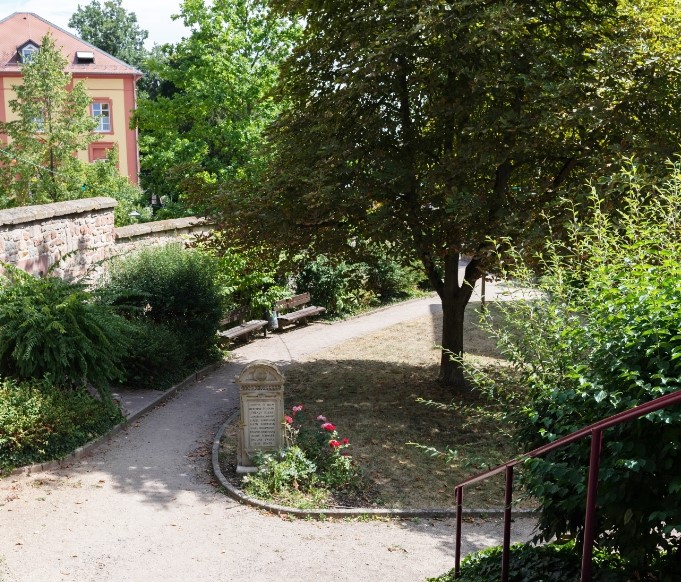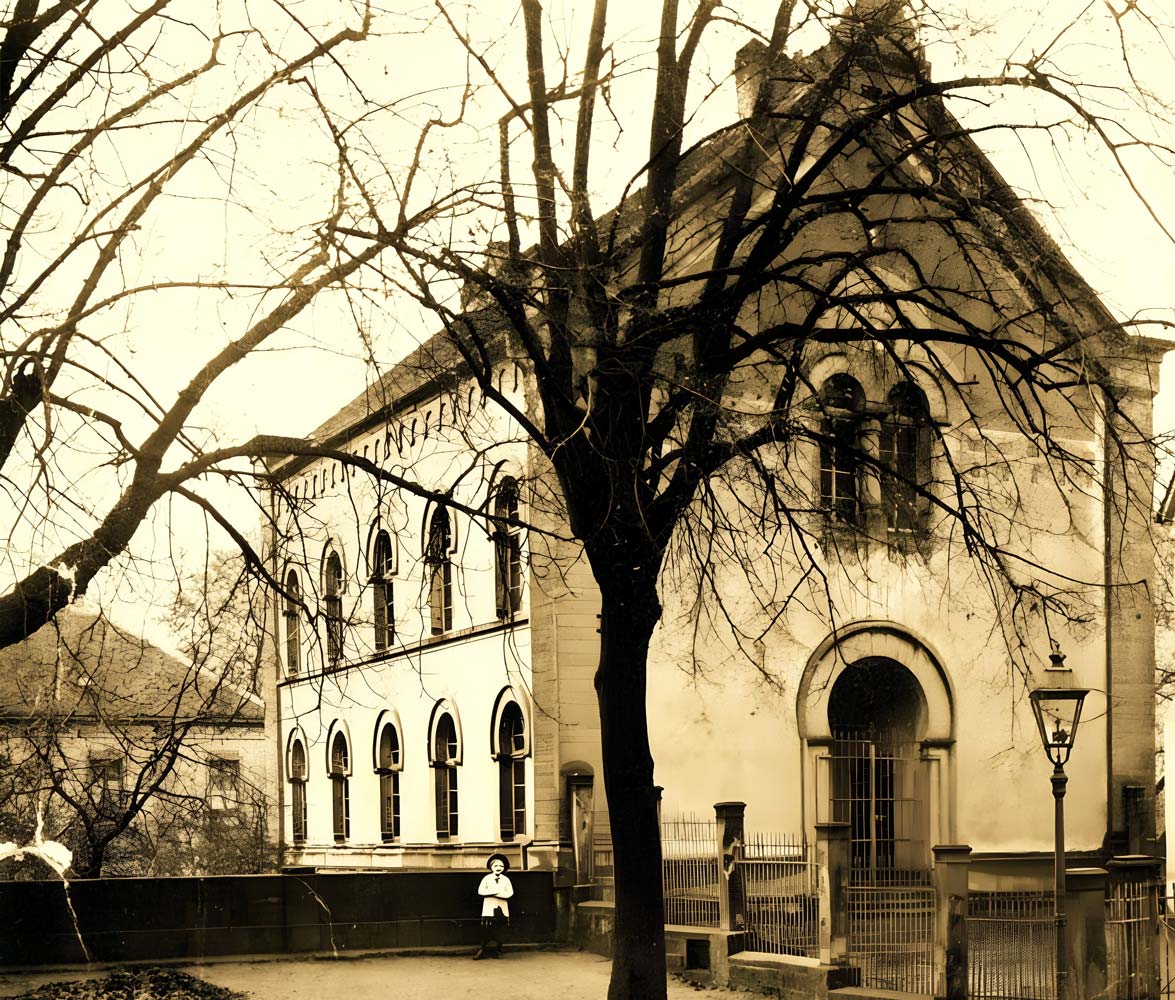Synagogue Square
August von Voit
The architect of the Kirchheimboland synagogue was August von Voit (1810-70). While he preferred the neo-Romanesque style for his numerous Palatinate church buildings, he chose a Moorish-Byzantine style for the synagogue in order to “remind us of the origin of the Jews from the Orient.”
In the spirit of King Ludwig I of Bavaria’s art policy, Voit worked as a civil building inspector for the Palatinate district government in Speyer from 1832-41. At the heart of this was the idea that all state and church buildings should be determined by an “idea of art” based on history.
The Kirchheimbolanden Synagogue has given expression to this.
“The synagogue fire spread”
In 1870, the Jewish community of Kirchheimbolanden had 134 members.
The synagogue was their place of worship – until November 10, 1938, when the Jewish house of worship in Kirchheimbolanden was also set on fire.
The Holocaust soon followed. – “The synagogue fire spread.”
The last eleven Jewish residents of the town are named in a “List of Jews still living in Kirchheimbolanden” dated December 6, 1939.
Their names are listed on a memorial stone on the site of the former synagogue.
Only two of those named survived the “Third Reich”.
“The flames blazed fiercely against the dark sky”
In November 1938, synagogues were burning in Germany – including in Kirchheimbolanden.
One of the last eleven inhabitants of the town – the then six-year-old Carl Hausmann – wrote about this in his life story published in 2011:
The day after the Reichsprogromnacht, on November 10, 1938, the Nazis set fire to the synagogue in Kirchheimbolanden. That night, my parents took me to the burning synagogue. The flames blazed fiercely against the dark sky. On Saturdays and during the vacations I went to services there with my father and brother. It was fateful that I became an eyewitness to the destruction through my parents, because not too many years later I would become one of the two survivors among the last remaining Jews in the town. (The other, Elise Usner, who was deported with an “Aryan” to Theresienstadt, a camp in Czechoslovakia, now the Czech Republic, which was a stopover on the way to the death camps. However, Hitler’s rule ended a month after her deportation, shortly before the great defeat of the German army that ended the Second World War in Europe, and Elise Usner returned to Kirchheimbolanden in June of the same year).
Carl Hausmann survived his deportation to France and found a new future in the USA.
The Jewish past in Kirchheimbolanden is commemorated by a series of “memorials” on the synagogue square, including three “memorial stones” from the Auschwitz, Dachau and Natzweiler-Struthof concentration camps.
Another “memorial site” is the Jewish cemetery in Judental with its 172 gravestones. Most of them date from the 19th century; the oldest is dated 1603.
They remain a sign against forgetting.

